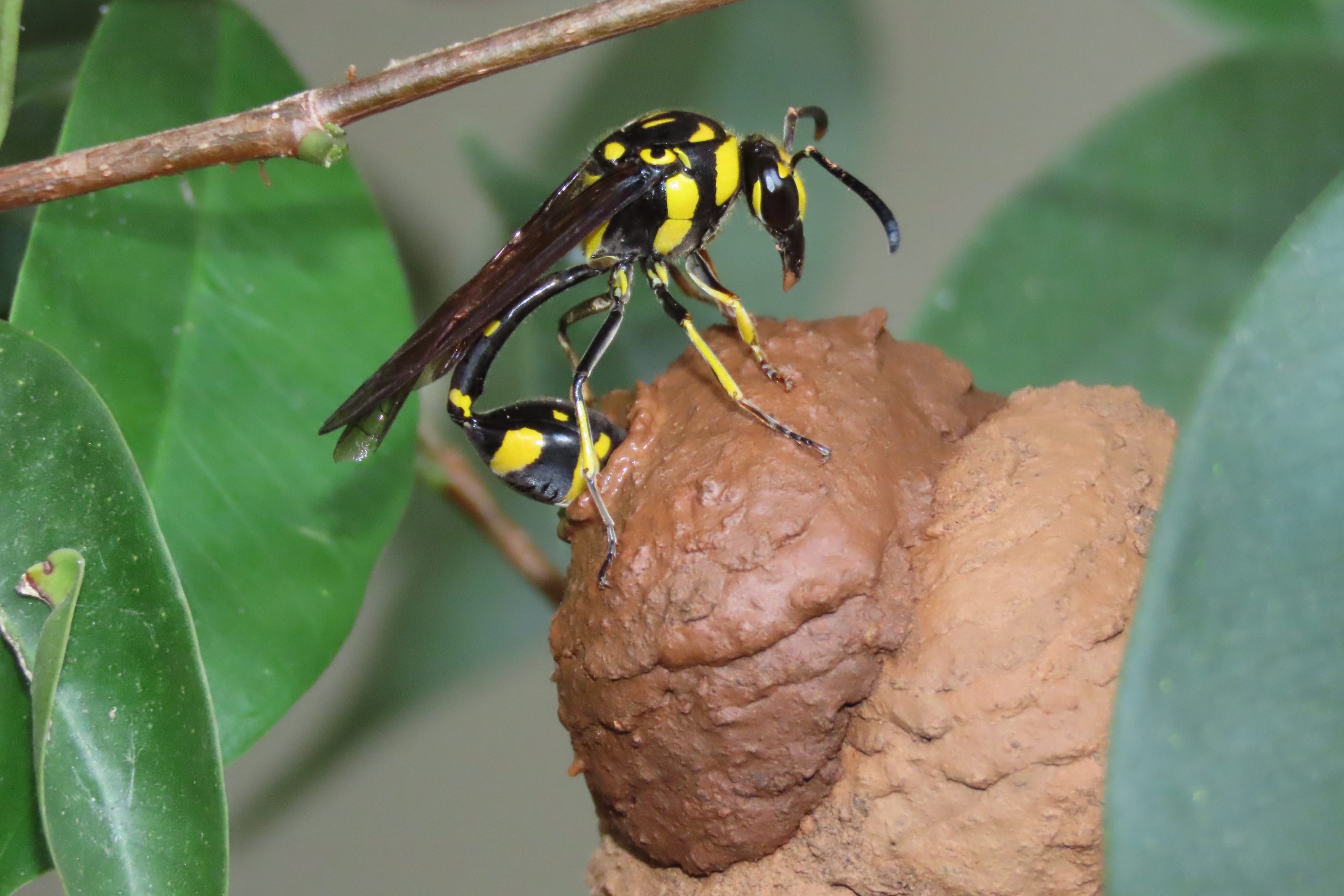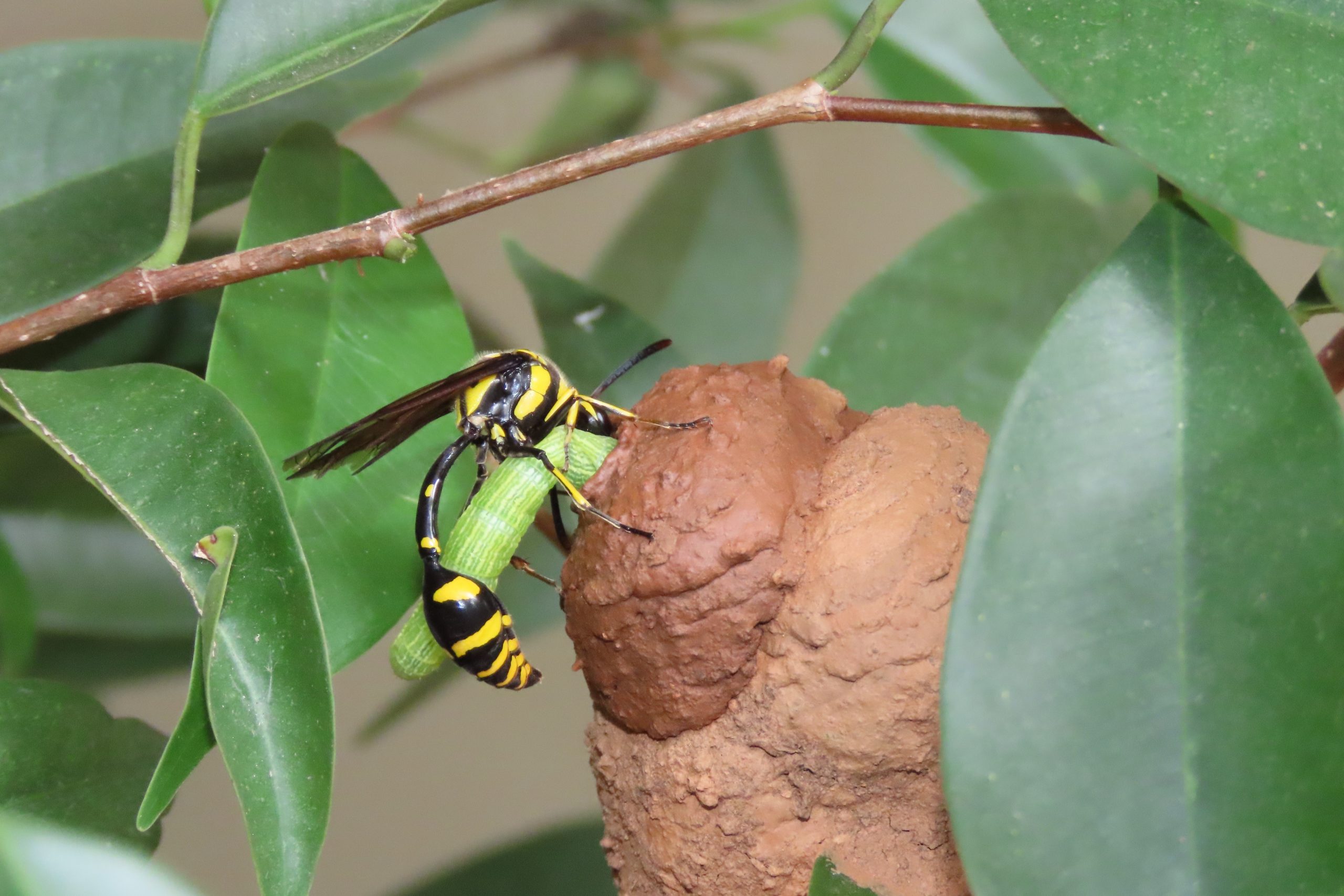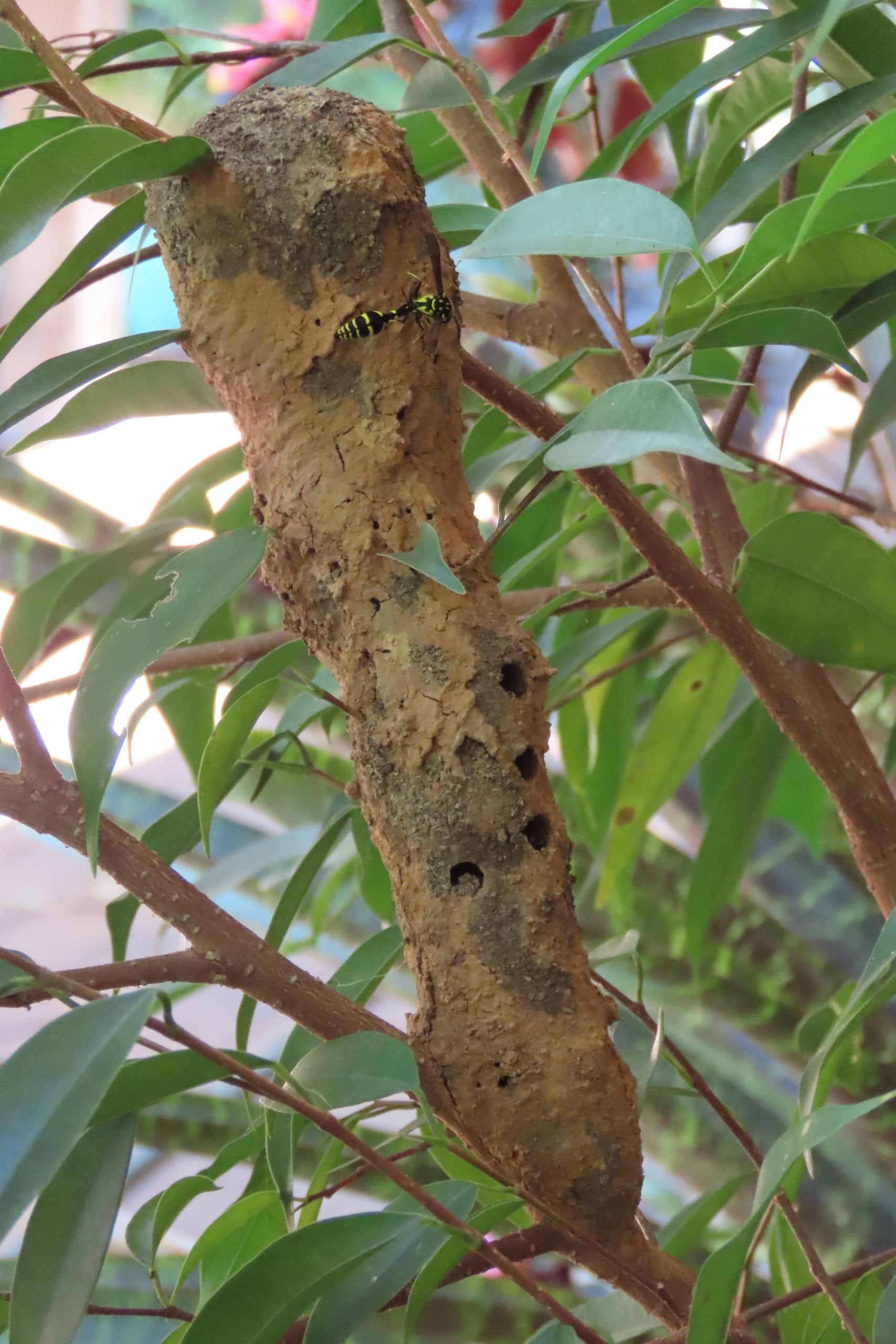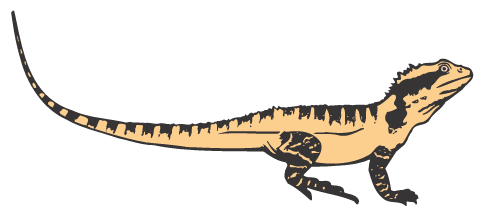A few months ago, a large, beautifully marked wasp appeared, building a mud nest just outside our front door and well in under the eave. It was a Potter Wasp, Phimenes arcuatus. It had chosen the stem of a potted Weeping Fig (Ficus benjamina) and, as time went by, its frequent arrivals each day carrying a ball of mud, led to it constructing a series of mud cells, each to hold an egg and each built on top of the previous one, gradually encasing the stem of the fig. It was fascinating to watch its marvellous skill, fashioning the moistened mud by using its forelimbs and mandibles to make each dome-shaped ‘pot’. At the top of each cell it left a very carefully made entrance hole, circled by a lip, and just the right size for the female wasp to insert her ovipositor (photo 1) to deposit an egg in the cell.  Female Potter Wasp laying egg in mud nest
Female Potter Wasp laying egg in mud nest
Her next task was to find and insert a caterpillar to nourish the wasp larva after it hatched (photo 2). Sometimes the cell would remain open for many hours, even overnight. Were caterpillars of the right size hard to find? Had the wasp died? And then we’d find the entrance sealed and the wasp would do some more mud work, perhaps to obscure where the entrance was, before she started on the next cell up the stem, building it partly on top of the one just finished so that the nest as a whole gradually extended up the stem. A video of the whole process can be seen on the MCCG YouTube.
 Female Potter Wasp bringing caterpillar to feed larva
Female Potter Wasp bringing caterpillar to feed larva
And then one day I noticed that one of the wasp’s wings was fraying, shortening it be a third. How could she fly? But she kept coming. Then one day ‘she’ arrived with two intact wings! And the penny dropped; apparently there was more than one wasp! And maybe more? As the cells extended up the stem, the wasps put on more mud, obscuring the definition of individual cells.
From about mid-December 2024 and on through March the cells extended up the fig’s stem by about 20 cm. While cells at the top were still being built and provisioned, exit holes low down showed that mature adults were already emerging at the bottom (photo 3). Eventually the upward extension came to an end about the end of March. Counting the exit holes in early May, at least 25 new adults had emerged. It seems to have been a successful nesting season.
 Complete Potter Wasp nest showing exit holes
Complete Potter Wasp nest showing exit holes
Words and Photos by Gordon Grigg
Published in the October 2025 edition of the Local Bulletin


